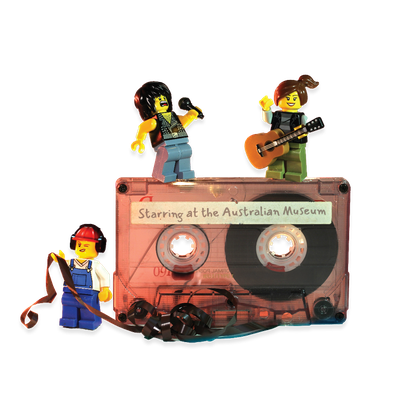Your search returned 2817 results
By Page Type
By Tag
- fish (966)
- blog (696)
- fishes of sydney harbour (401)
- First Nations (298)
- Blog (236)
- AMRI (169)
- archives (164)
- Eureka Prizes (146)
- Aboriginal and Torres Strait Islander (135)
- insect (126)
- Ichthyology (124)
- geoscience (109)
- minerals (102)
- climate change (99)
- podcast (94)
- Fish (91)
- Anthropology (89)
- International collections (80)
- Minerals Gallery (78)
- wildlife of sydney (78)
- Labridae (77)
- frog (74)
- gemstone (70)
- photography (66)
- history (64)
- Mollusca (60)
- gem (59)
- staff (59)
- Birds (56)
- Gems (56)
- Indonesia (56)
- education (56)
- shark (55)
- AMplify (54)
- people (53)
- earth sciences (50)
- exhibition (50)
- past exhibitions (50)
- Gobiidae (48)
- sustainability (46)
- Pomacentridae (45)
- Serranidae (44)
- lifelong learning (42)
- science (42)
- Earth and Environmental Science (41)
- Syngnathidae (41)
- Ancient Egypt (40)
- Bali (40)
- bird (40)
- dangerous australians (40)
-
Hastings River Mouse
https://australian.museum/learn/animals/mammals/hastings-river-mouse/Rounded nose, prominent eyes surrounded by a dark ring, and tail about the same length as the head and body.
-
White-cheeked Honeyeater
https://australian.museum/learn/animals/birds/white-cheeked-honeyeater/Medium size, black and white, long curved bill, bright yellow tail.
-
Estuarine Stonefish, Synanceia horrida (Linnaeus, 1766)
https://australian.museum/learn/animals/fishes/estuarine-stonefish-synanceia-horrida/Two species of stonefishes are recorded from Australia, the Estuarine Stonefish and the Reef Stonefish.
-
Brown Tang, Zebrasoma scopas (Cuvier, 1829)
https://australian.museum/learn/animals/fishes/brown-tang-zebrasoma-scopas/Brown Tang, Zebrasoma scopas (Cuvier, 1829)
-
Zebra Seahorse, Hippocampus zebra Whitley, 1964
https://australian.museum/learn/animals/fishes/zebra-seahorse-hippocampus-zebra/Zebra Seahorse, Hippocampus zebra Whitley, 1964
-
Eschmeyer's Scorpionfish, Rhinopias eschmeyeri Condé, 1977
https://australian.museum/learn/animals/fishes/eschmeyers-scorpionfish-rhinopias-eschmeyeri/Eschmeyer's Scorpionfish, Rhinopias eschmeyeri Condé, 1977
-
Oxeye Herring, Megalops cyprinoides (Broussonet, 1782)
https://australian.museum/learn/animals/fishes/oxeye-herringoxeye-herring/Oxeye Herring, Megalops cyprinoides (Broussonet, 1782)
-
Blackback Butterflyfish, Chaetodon melannotus Bloch & Schneider, 1801
https://australian.museum/learn/animals/fishes/blackback-butterflyfish-chaetodon-melannotus/Blackback Butterflyfish, Chaetodon melannotus Bloch & Schneider, 1801
-
Paxton's Whipnose, Gigantactis paxtoni Bertelsen, Pietsch & Lavenberg, 1981
https://australian.museum/learn/animals/fishes/paxtons-whipnose-gigantactis-paxtoni/Paxton's Whipnose, Gigantactis paxtoni Bertelsen, Pietsch & Lavenberg, 1981
-
Largemouth Goby, Redigobius macrostoma (Günther, 1861)
https://australian.museum/learn/animals/fishes/largemouth-goby-redigobius-macrostoma/Largemouth Goby, Redigobius macrostoma (Günther, 1861)
-
Discover more
2025 Australian Geographic Nature Photographer of the Year
Special exhibition
Free entry
Now open -
Discover more
Unfinished Business
Special exhibition
Free entry
Now open -
Discover more
Wansolmoana
Permanent exhibition
Free entry
Open daily -
Find out more
Burra
Permanent kids learning space
Free entry
10am - 4.30pm![]()
-
Discover more
Minerals
Permanent exhibition
Free entry
Open daily![]()




